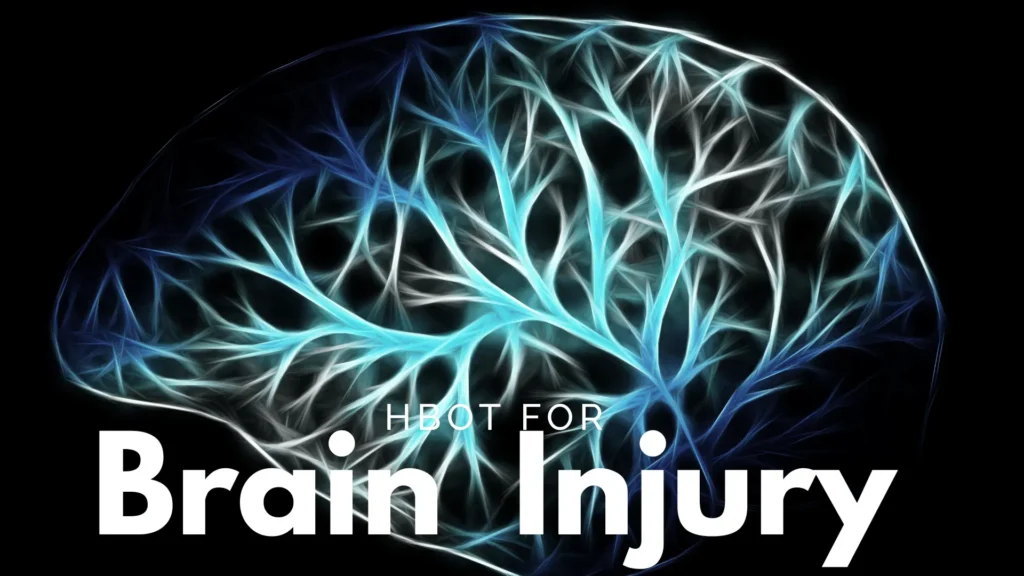Introduction
Traumatic Brain Injury (TBI) occurs when a sudden impact or force disrupts normal brain function. This can result from falls, car accidents, sports injuries, or any head trauma. TBI can cause cognitive, emotional, and physical impairments that may last for weeks, months, or even permanently.
Hyperbaric Oxygen Therapy (HBOT) is an emerging treatment that may help people recovering from TBI. It works by delivering 100% oxygen at increased atmospheric pressure, allowing more oxygen to reach brain cells that are damaged due to injury. Studies suggest that HBOT can reduce inflammation, stimulate brain cell repair, and improve cognitive and motor functions in TBI patients.
This article explores how HBOT works for TBI, its benefits, scientific research, and what to expect during treatment.
Understanding Traumatic Brain Injury (TBI)
TBI is classified into three main types:
- Mild TBI (Concussion) – Temporary symptoms such as confusion, headaches, dizziness, and memory problems.
- Moderate TBI – More serious symptoms, including loss of consciousness, prolonged confusion, and long-term cognitive or physical challenges.
- Severe TBI – Extensive brain damage, leading to permanent disability, coma, or even death.
TBI can affect various brain functions, including memory, coordination, speech, and behavior. Traditional treatments focus on medications, physical therapy, and cognitive rehabilitation, but HBOT is gaining attention as a supplemental therapy to speed up recovery.
How HBOT Works for Traumatic Brain Injuries
HBOT enhances the body’s ability to heal by increasing oxygen levels in the bloodstream. This is especially important after TBI because damaged brain tissue often struggles to receive enough oxygen for proper healing.
During HBOT sessions, patients breathe pure oxygen inside a pressurized chamber. This increases oxygen concentration in the blood, which helps:
- Reduce brain swelling
- Increase blood flow to damaged areas
- Support brain cell repair
- Enhance neuroplasticity (the brain’s ability to rewire and heal)
- Improved energy production in brain cells
Benefits of HBOT for TBI Patients
1. Reduces Brain Inflammation
After a head injury, inflammation can worsen damage. HBOT has anti-inflammatory effects that help reduce swelling and improve blood circulation, allowing brain cells to function better.
2. Improves Oxygen Delivery to Injured Areas
TBI can limit oxygen supply to certain brain regions, slowing recovery. HBOT enhances oxygenation, helping revive dormant brain cells and promote healing.
3. Supports Brain Cell Regeneration
HBOT stimulates the release of stem cells, which can aid in brain cell repair and improve overall neurological function.
4. Enhances Cognitive Function
Many TBI patients struggle with memory loss, poor concentration, and mental fog. Studies indicate that HBOT can improve focus, clarity, and cognitive performance.
5. Improves Motor Skills and Physical Coordination
HBOT may help restore movement and coordination in TBI patients who experience muscle weakness or loss of motor control.
6. Promotes Neuroplasticity
Neuroplasticity is the brain’s ability to form new connections and adapt after injury. HBOT encourages this process, allowing patients to regain lost skills over time.
Scientific Research on HBOT for TBI
1. HBOT and Cognitive Recovery
A study published in Brain Research found that TBI patients who received HBOT showed improved cognitive function, memory, and problem-solving skills.
2. HBOT and PTSD in Veterans with TBI
A study conducted by the U.S. Department of Defense on military veterans with TBI and PTSD found that HBOT significantly improved mood, sleep, and mental clarity.
3. HBOT and Neurological Repair
A report in The Journal of Neurotrauma showed that HBOT enhanced brain repair by increasing blood flow and reducing oxidative stress.
Who Can Benefit from HBOT for TBI?
HBOT may help individuals experiencing:
- Persistent headaches after a head injury
- Memory loss and difficulty concentrating
- Chronic fatigue and brain fog
- Dizziness and balance problems
- Mood swings, depression, or anxiety following TBI
- Motor coordination issues
While HBOT is not a standalone cure, it can be an effective part of a comprehensive TBI recovery plan.
What to Expect During HBOT Treatment
1. Session Duration
Each HBOT session lasts 60 to 90 minutes, with multiple sessions recommended for the best results.
2. The Pressurized Chamber Experience
Patients enter a chamber where they breathe 100% oxygen at higher-than-normal atmospheric pressure. Some chambers accommodate multiple people, while others are designed for individual use.
3. Sensations During Treatment
Patients may feel a mild pressure change in their ears, similar to airplane travel. Most find the experience comfortable and relaxing.
Additional Benefits of HBOT for Brain Health
Aside from treating TBI, HBOT may also help with:
- Reduces oxidative stress – Helps prevent further brain cell damage.
- Enhancing sleep quality – TBI patients often struggle with sleep; HBOT can help regulate sleep patterns.
- Boosting immune function – Increased oxygen levels strengthen the immune system.
- Alleviating fatigue and headaches – Common TBI symptoms that may improve with HBOT.
Is HBOT Safe for TBI Patients?
HBOT is considered safe when administered under medical supervision. Mild side effects may include:
- Ear pressure discomfort
- Temporary fatigue
- Mild lightheadedness
Patients with lung conditions, uncontrolled seizures, or inner ear problems should consult their doctor before starting HBOT.
Final Thoughts
HBOT is a promising therapy for TBI recovery. By increasing oxygen supply, reducing inflammation, and stimulating brain repair, HBOT may help improve cognitive function, motor skills, and overall brain health.
Although HBOT is not a replacement for traditional TBI treatments, it can be an effective complementary therapy to enhance recovery. Individuals recovering from TBI should consult their doctor to see if HBOT is right for them. 🚀

